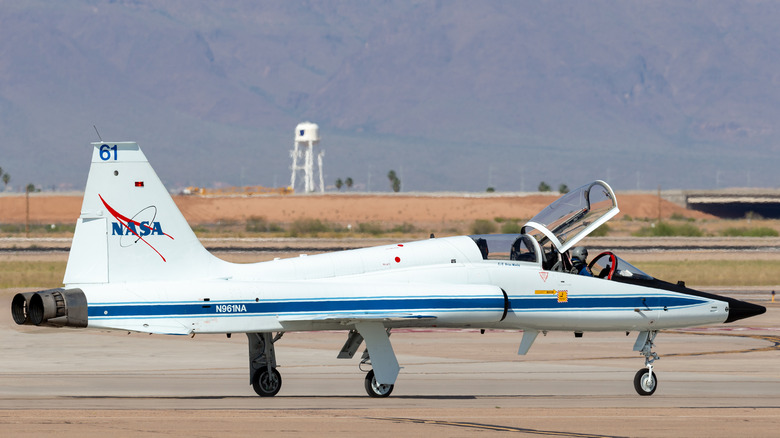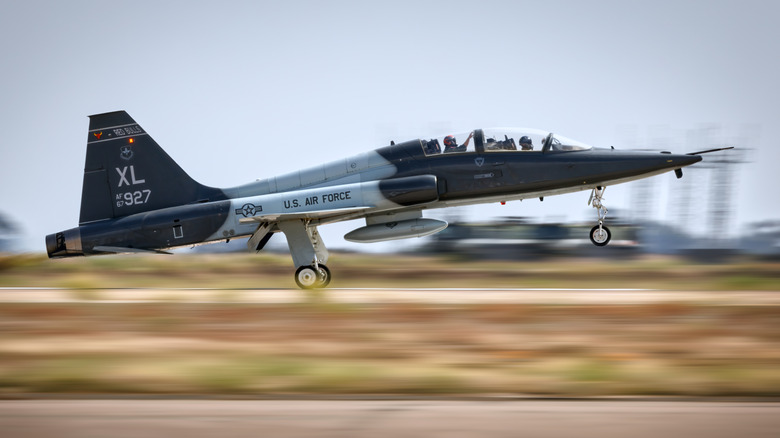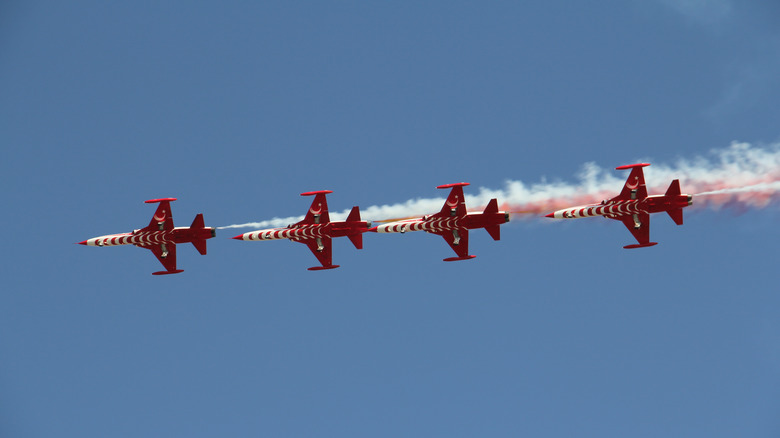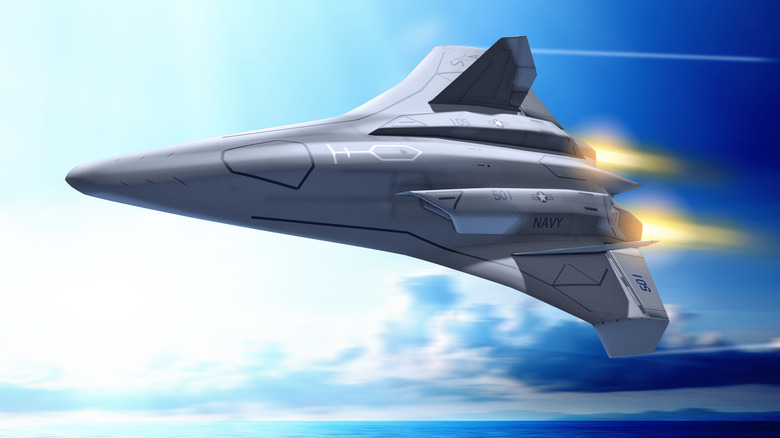How The Northrop T-38 Talon Jet Prepares Air Force Pilots For The Skies
The U.S. Air Force owns and operates a wide variety of aircraft, so a jet specifically for training makes a lot of sense. A stripped-down jet with just the essentials is ideal for training pilots to fly by the seat of their pants and not rely too much on instrumentation and automated systems. For this purpose, since around 1960, the T-38 Talon has served as the primary trainer jet for the Air Force while also coming into use by several other countries. In that time, it has become a highly valued asset because of its ease of maintenance and excellent safety record. More than 70,000 pilots have trained on the T-38.
Even though it is a basic jet without armaments, the T-38's climb rate and altitude ceiling make it effective for aerial combat training. And because it is a supersonic jet, it can prepare trainees for supersonic flight, a requirement for flying fighters or bombers for the Air Force. The T-38 has been used to train pilots who went on to fly advanced aircraft such as the F-16 Fighting Falcon, the A-10 Thunderbolt, and the F-22 Raptor. The last of the nearly 1,200 Talons built was delivered to the Air Force by Northrop Grumman in 1972, but the model is so good at its job and so easy and inexpensive to maintain more than 500 are still in operation.
History
In the mid-1950s, the Air Force was looking to replace its trainer jet, the T-33 Shooting Star. The T-33 is a subsonic jet, and the Air Force knew the future was faster. The T-38 started life as a proposed lightweight fighter plane, the N-156, but when the Air Force sent out the call for a supersonic training jet, Northrop Grumman pivoted and presented its new design. It became popular quickly after its adoption. After graduating from basic flight training in the T-37 Tweet, pilots would learn advanced maneuvers, like blind flying and formation flight, and recovery tactics, such as recovering from a spin or a stall and landing with one engine, in the Talon.
Northrop developed two main variants for the T-38: the T-38A and the T-38B, a variant fitted with a gunsight and used to practice firing weapons. Over the years, most T-38s have been converted into T-38Cs, which have updated avionics, heads-up displays, GPS, and collision avoidance.
Current use
The T-38 is still in use by the U.S. Air Force as it seeks a successor model. It is also used by the Air Force's Test Pilot School. Pilots from other NATO countries train on the T-38. One high-profile use of the T-38 Talon is NASA's fleet of 32 of them. These T-38s are used for astronaut training and as chase planes for observation of aircraft and spacecraft undergoing testing.
Another well-known use of the T-38 was by the USAF's Thunderbirds precision flying exhibition team. It was their standard jet until the Diamond Crash of early 1982, when four of the craft crashed together during a training flight, killing all four pilots. The cause of the crash was determined to be a jammed stabilizer on the lead plane. The Thunderbirds thereafter replaced the T-38 Talon with the F-16A Fighting Falcon. Despite this incident, the T-38 is still used as a trainer jet by the U.S. Air Force, Germany, and Turkey.
The future
After 60 years in service, the T-38 will finally be replaced as the Air Force's main trainer jet. In 2010, the Pentagon announced a program to find a successor to the Talon. Models were proposed by Rolls-Royce, Lockheed Martin, and Raytheon, but it was a Boeing/Saab collaboration that was declared the winner in 2018. The Air Force has named the jet the T-7A Red Hawk as a tribute to the Tuskegee Airmen.
A jet designed half a century after the Talon, the Red Hawk can produce more thrust with its single engine than the T-38 with its two engines. Since it was designed from the ground up to be a low-cost, flexible training jet, the Red Hawk was digitally designed to be as inexpensive to repair and maintain as possible, even to the point of reducing how many holes had to be drilled to assemble it. It has advanced training features, such as the ability for a pilot in a Red Hawk to digitally dogfight with another pilot in a simulator. Specifically designed to train pilots in high-G and night operations, the T-7A can be modified quickly and cheaply to train for other roles. With any luck, the T-7A Red Hawk will have as long and illustrious a career as the venerable model she replaces.



